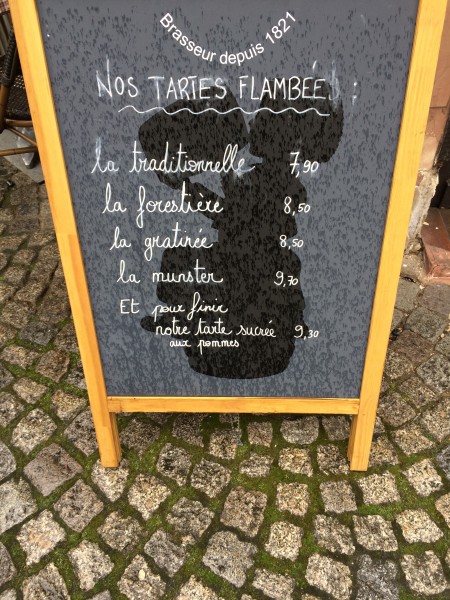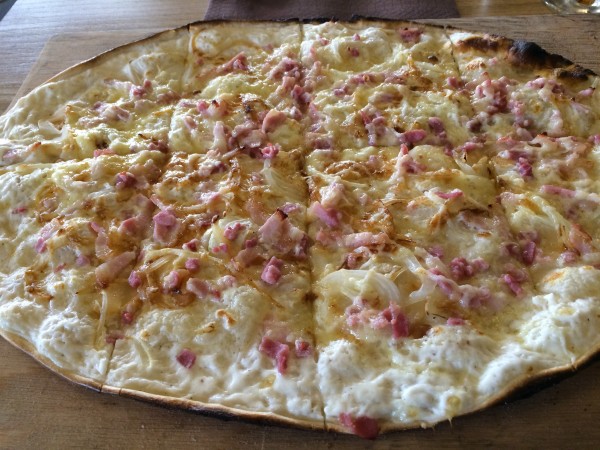I’d eaten tarte flambée years ago, at a restaurant in downtown San Francisco that no longer exists (though I believe that space now houses Kokkari). It really made an impression on me, because it was unlike anything I’d ever had before. A thin crispy crust smeared with something creamy, covered with bacon and onions, and then broiled to bubbling perfection — it was love at first bite. But it was mysteriously difficult to decipher and translate into something I could make at home. I now have only a dim recollection of the original I had all that time ago, but I have very clear memories of my varied attempts at duplicating it — flaky pie crust, maybe creme fraiche, sometimes bechamel, and definitely caramelized onions — never raw onions. Though it’s hard to go wrong with those ingredients — and the results were tasty — they did not really add up to tarte flambée.
You can imagine my excitement when I realized that one of my stops in France would be Strasbourg, where this classic originated. Tarte flambées were featured at almost every brasserie I spotted, so I ate as many of them as I could.

La forestière — with mushrooms; la gratinée — with gruyère; la munster — with munster; and to finish, a sweet tart with apples (I wish I’d tried that, but I was always too full for dessert).
Now that I’ve had the real thing, I know this: the “traditionelle” tarte flambée has a crispy, cracker-like crust and is covered with a thin smear of creme fraiche or fromage blanc, paper-thin slivers of white onion, and a generous amount of lardons. (Lardons were available in French markets, ready to use; they were something like a cross between our American ham and bacon — so not readily replicated state- side. Speck might be the closest substitute here.) As you can see above, there are a few variations available, but I found I was only willing to adulterate the classic with a thin coat of gruyere (“la gratinée”).
The name of this dish is a bit misleading to the American ear, given that we use the term “flambée” to refer to things like crepes, the preparation of which often involves adding liqueur to a hot skillet, after which it is set on fire for a dramatic presentation. The “flambée” here refers to the effect of baking in a very hot oven (not unlike a classic pizza oven) — resulting in a “tart baked in the flames.”
I am happy to say I’ll be making some more informed attempts at duplicating it, using a pizza dough crust, the hottest temperature my oven can muster (and maybe even the broiler), and a baking stone. The hot oven is crucial, and I may find I can’t achieve quite the same results, but it seems worth trying for something this delicious.



Recent Comments